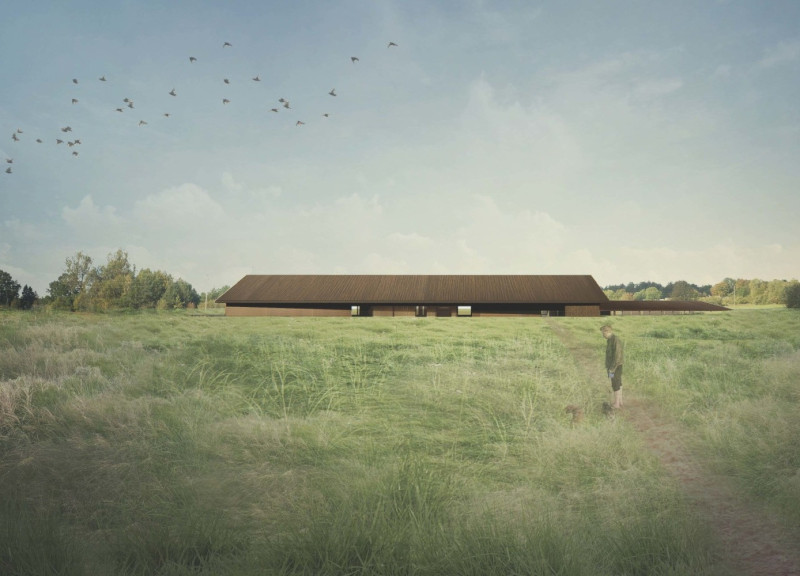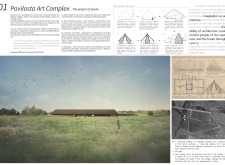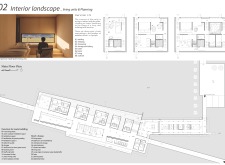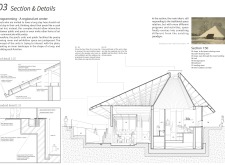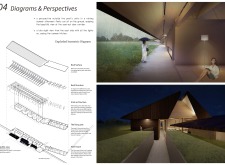5 key facts about this project
The Pavilosta Art Complex is an architectural project designed to serve as a retreat and collaborative space for poets and artists in Pavilosta, a coastal town in Latvia. This building integrates creative workspaces with residential units, emphasizing community engagement and interaction with the surrounding natural environment. The design showcases a modern interpretation of traditional Latvian architecture, drawing inspiration from local forms while promoting an inviting atmosphere for artistic endeavors.
Spatial Configuration and Functionality
The Pavilosta Art Complex is organized into distinct zones that prioritize both private and communal activities. The project includes living units that accommodate groups of poets, structured to foster social interaction. Each unit features a looped layout, enhancing fluid movement and allowing for spaces dedicated to sleeping, reading, and discussion. The complex’s central gathering area serves as a hub for workshops and public readings, promoting a collaborative creative process among residents and local artists.
The design features semi-outdoor spaces that facilitate interaction with nature, reflecting the project's commitment to creating a dialogue between the built environment and the landscape. Important details include large windows that enhance natural light and ventilation, supporting an open and airy atmosphere conducive to creative work.
Integration of Materials and Sustainability
The architectural design emphasizes the thoughtful use of materials that blend with the local context. Corrugated galvanized steel is employed for the roof to ensure durability while maintaining a contemporary aesthetic. Interior spaces feature cedar wood, which introduces warmth and a tactile quality to the environment. Concrete elements provide structural integrity and serve as a solid foundation for the airy wooden components above. The selection of materials aligns with sustainable practices, ensuring minimal environmental impact while enhancing the building's functionality and aesthetics.
Community-Centric Design Approach
What makes the Pavilosta Art Complex unique is its community-centric focus, which differentiates it from other artistic retreats. Unlike traditional spaces that prioritize solitude and personal reflection, this project encourages public engagement through accessible gathering spots and open workshops. Its design cultivates a sense of belonging and collaboration, inviting local residents to partake in artistic activities. The architectural narrative deeply connects with Courland's regional identity, merging the past and future of Latvian cultural heritage.
For those interested in a comprehensive understanding of this architecture project, exploring the architectural plans, sections, and various design elements will provide deeper insights into how the Pavilosta Art Complex innovatively addresses the needs of its users while respecting its coastal environment.


